
Globular clusters are celestial formations that consist of stars arranged in a spherical shape. They are characterized by their gravitational connection and their rotation around the center of a galaxy. In essence, these clusters can be described as a group of stars that move in a satellite-like manner.
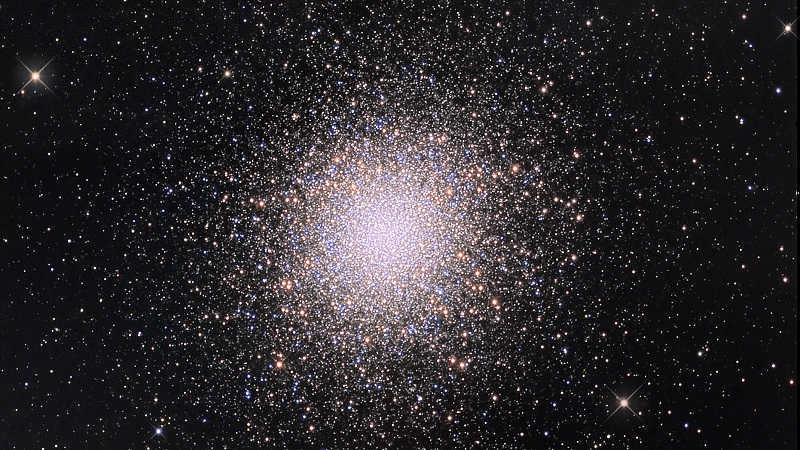
A celestial cluster is a collection in which each stellar entity is connected to a neighboring gravitational field. Furthermore, they originate from a single massive molecular cloud. Additionally, their movement is coordinated as a unified entity.
The central region of the galaxy – refers to a small area at the heart of the galaxy where stars are born and where the core of the star system is situated.
Furthermore, there exist dispersed clusters. However, these are characterized by a lesser gravitational force between the component parts.
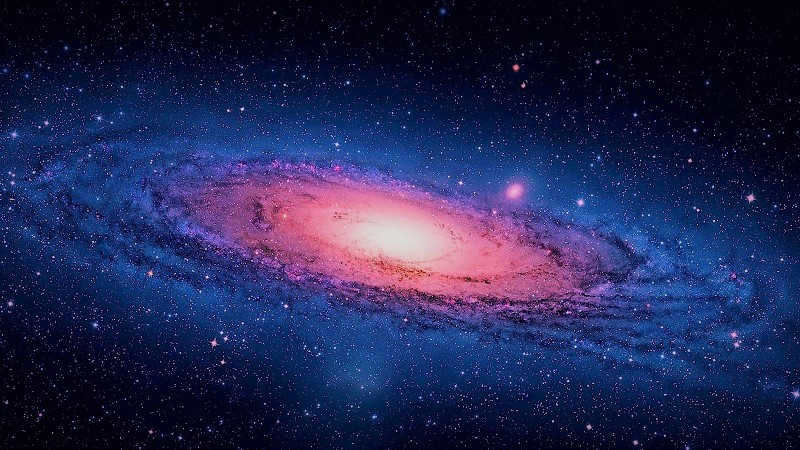
What are the characteristics of globular clusters?
- Firstly, they are located in the spherical halo, which is the primary component of our Galaxy.
- Secondly, they contain a significantly higher number of stars.
- Thirdly, they are significantly older.
- Fourthly, they have a distinct symmetrical spherical shape;
- And finally, the concentration of stars increases towards the center. In other words, the closer to the center, the greater the number of stars surrounding it. In simpler terms, they are densely packed together.
This is likely the reason why globular clusters in the Milky Way are primarily concentrated near the core. Additionally, a large number of them are situated around the galactic nucleus.
According to scientists, the number of stars per cubic parsec in the central regions of such compounds can range from 100 to 1000. Additionally, the distance between these stars is approximately 3-4.5 trillion kilometers.
It has been discovered that globular clusters have a diameter of 20-60 parsecs and a mass of about ten to a million solar masses.
The vast collections of stars in the cosmos are known as galaxies.
Shepley-Sawyer Classification of Concentration Classes
Certainly, when an object is not found in a solitary instance, humans will identify a collective of it based on certain characteristics. This is our natural way of organizing things, as it facilitates understanding.
Thanks to the diligent efforts and investigations conducted by astronomers, globular clusters have been classified into distinctive categories.
This categorization is determined by the composition of the entities encompassed within the cluster. Here, classes 1 to 12 are emphasized in descending order.

Globular Clusters: A Home to Diverse Stars
When we look up at the night sky, we can see a mesmerizing spectacle known as a globular cluster. These clusters are made up of hundreds of thousands, and sometimes even millions, of stars with low metallicity.
But that’s not all – globular clusters can also be home to exotic objects such as neutron stars and black holes. These clusters are formed by stars of different ages, although the majority of them are quite old and mature.
The investigation
Currently, there is still much to learn about the origins of these celestial entities. The question of which stars make up globular clusters remains unanswered. Specifically, it is uncertain whether they consist solely of stars of the same age or if they also include celestial bodies that have undergone numerous cycles.
While it is generally observed that the stars within these clusters are at similar stages of evolution, indicating a shared formation time, there are instances where different ages of elements are present within certain clusters.
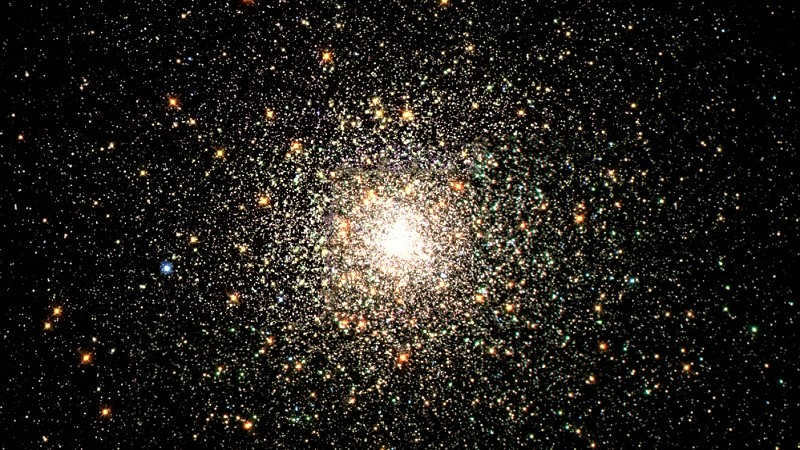
One interesting finding has emerged from the observations: globular clusters tend to be found in regions of space where star formation is occurring, suggesting that they form in denser areas of the interstellar medium.
These clusters are particularly abundant in regions experiencing bursts of star formation, as well as in galaxies that are undergoing interactions with other galaxies.
Interestingly, globular clusters themselves do not exhibit active star formation, indicating that they are ancient objects in the universe composed of stars that have reached an advanced age.
Furthermore, their chemical composition and elongated orbits suggest that they formed around the same time as the Milky Way galaxy itself, making them some of the oldest objects in outer space, with ages ranging from 10 to 20 billion years.
Globular clusters are actually quite common throughout the Universe. There are more than 150 spherical groups within the Milky Way alone, which formed around 10 billion years ago. Scientists have observed that these clusters have low amounts of heavy elements and high densities, making them unlikely places for planet formation.
One well-known example of a scattered cluster is the Pleiades cluster in the Taurus constellation. Interestingly, it is also one of the closest clusters to us. On the other hand, the spherical clusters are often referred to as Messier objects, such as M2, M4, M5, M13, and others.
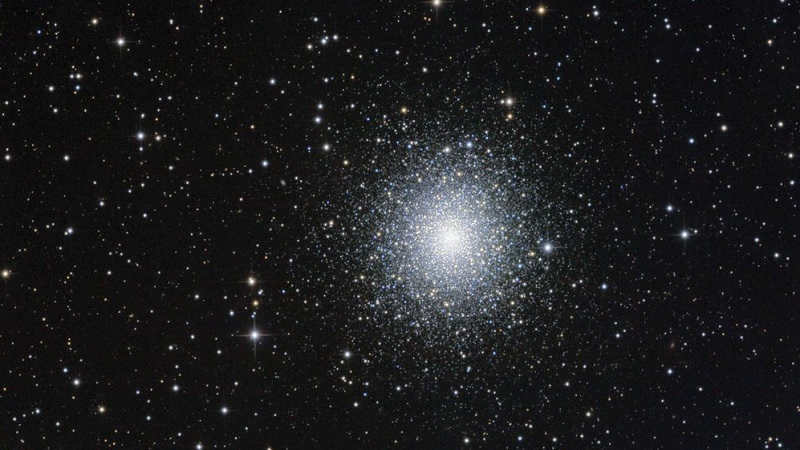
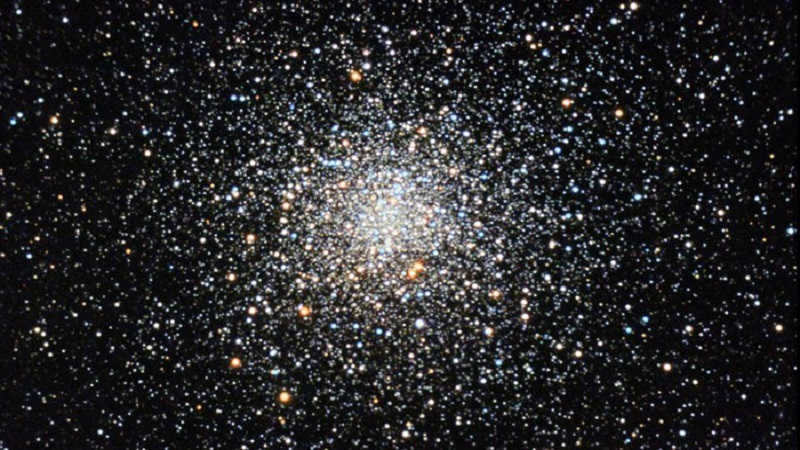
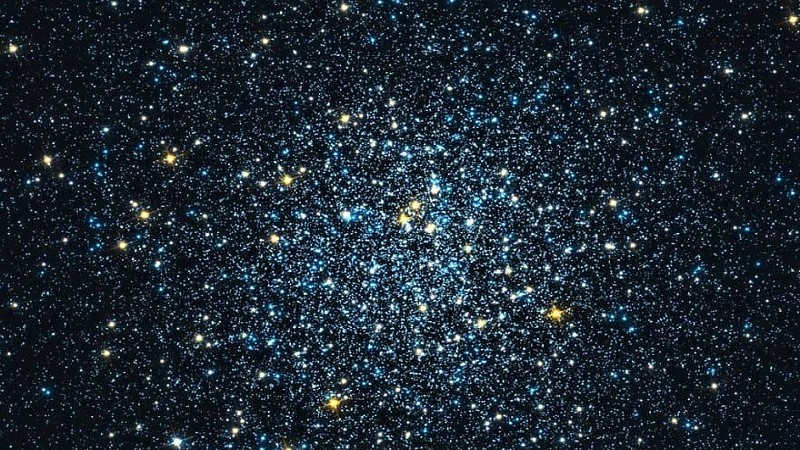
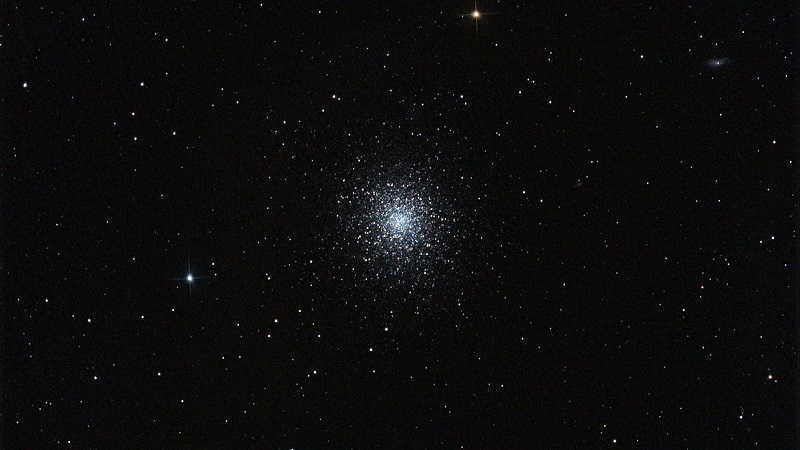
Today we gained knowledge about globular formations and the star clusters that contain a larger number of stars. Undoubtedly, the exploration of these phenomena is crucial for understanding the development of celestial bodies, the age of the Universe, and the formation and structure of galaxies.
There is no question that star clusters are incredibly captivating and visually striking entities.
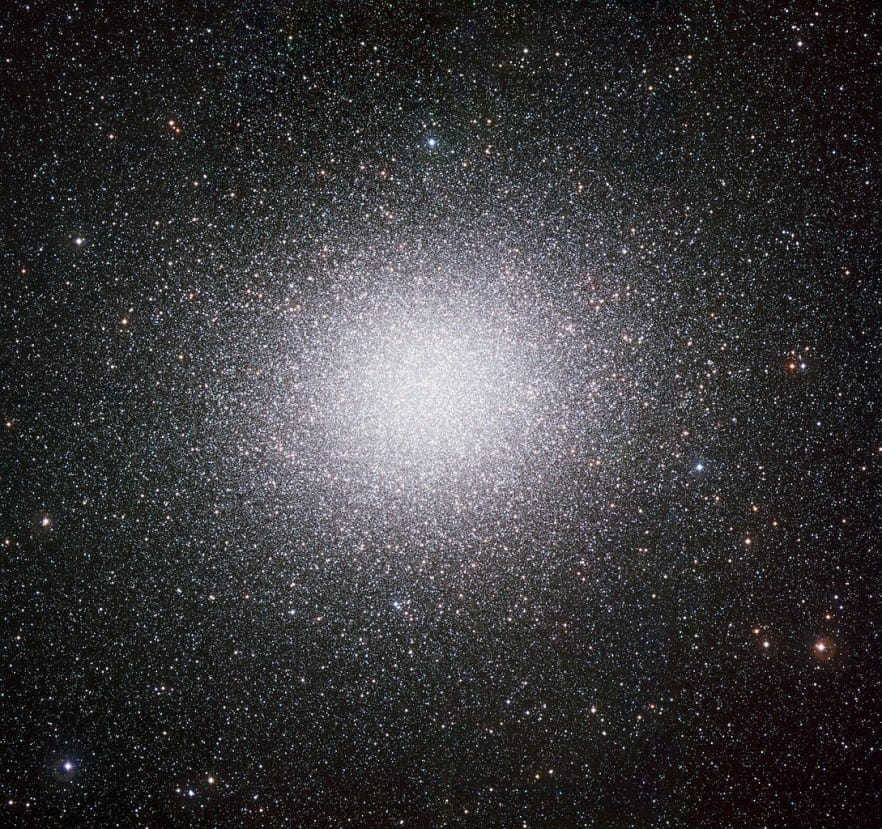
Observing Globular Clusters – Tips and Techniques: Selecting the Right Telescope, Eyepiece, Filters, Noteworthy Clusters from the Messier and NGC Catalogs, Top 10 Most Stunning Ones.
The night sky is adorned with the most magnificent and dazzling celestial objects known as globular clusters. These awe-inspiring formations derive their name from their characteristic spherical shape. Comprised of a multitude of ancient stars, predominantly red giants, these luminous orbs captivate the imagination. Recent investigations into globular clusters have revealed that certain entities of this kind possess an age of 15 billion years, which contradicts the prevailing model of the Universe. According to this model, the age of our Universe does not surpass 13.7 billion years. This revelation has sparked a flurry of scientific debates. Subsequently, scientists have revised the age of globular clusters, and the current consensus within the scientific community is that these celestial entities do not exceed 11 billion years in age. Nevertheless, each and every observation of globular clusters continues to inspire speculation regarding the ancient origins of our universe.
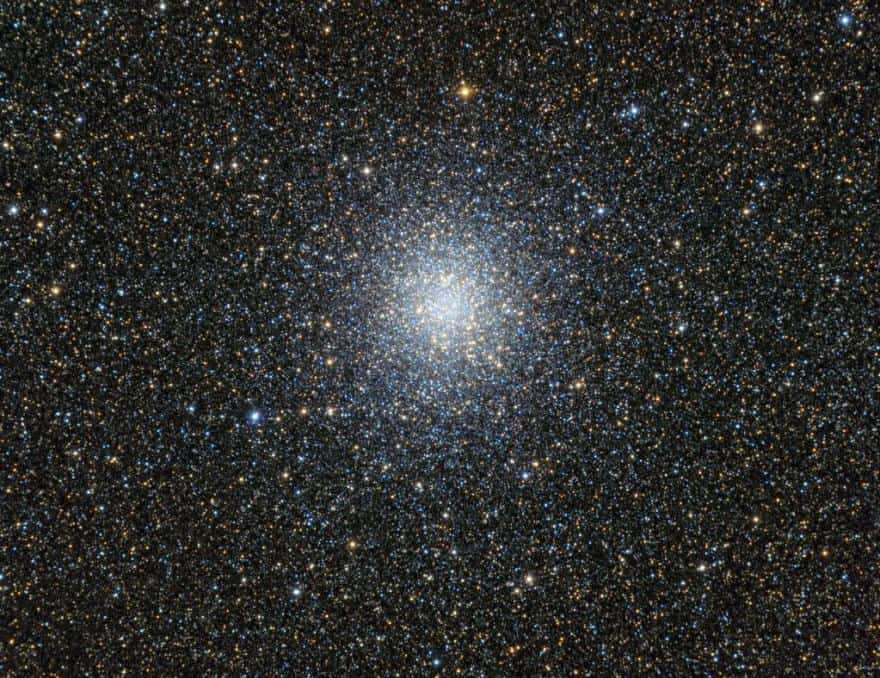
NGC 6656, also known as Messier 22, is a globular cluster that exhibits a symmetrical formation with a luminous core and a vast number of stars positioned in close proximity to one another. A notable pattern within globular clusters is that the density of stars increases as one moves closer to the center and gradually diminishes towards the outer boundaries. On average, globular clusters have a size ranging from 100 to 200 parsecs.
Within our galaxy, there are presently a total of 189 cataloged globular clusters. Interestingly, 13% of these clusters are situated within the Sagittarius constellation, which is located at the very heart of the Milky Way.
Nevertheless, globular clusters are also present in other galaxies. Take, for instance, the G1 cluster located in the Andromeda galaxy (M31), which can be examined using a basic telescope suitable for amateur astronomers.
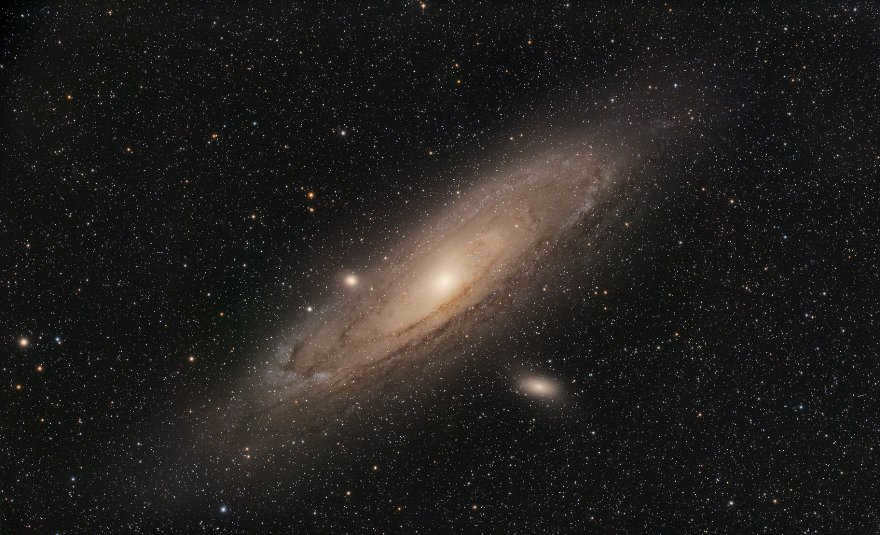
Messier 31, also known as the Andromeda galaxy, along with the globular cluster Messier 32
Interestingly, recent studies have shown that globular clusters are not always associated with a specific galaxy. Astronomers have actually discovered intergalactic clusters that wander and are located at a considerable distance from any galaxy group. These clusters are estimated to be about 400 million light years away from us. It is believed that these clusters may have been expelled from their original galaxies for unknown reasons.
Equipment required
Not everyone is familiar with the methods and locations for locating and observing globular star clusters. It is beneficial to have a star chart readily available, as it simplifies the search process. Alternatively, you can utilize the tools and materials provided on our website, including online maps, telescopes, virtual models, and comprehensive information containing coordinates and optimal observation timings for globular clusters. For instance, by utilizing the star chart, locating the Hercules globular cluster becomes effortless.
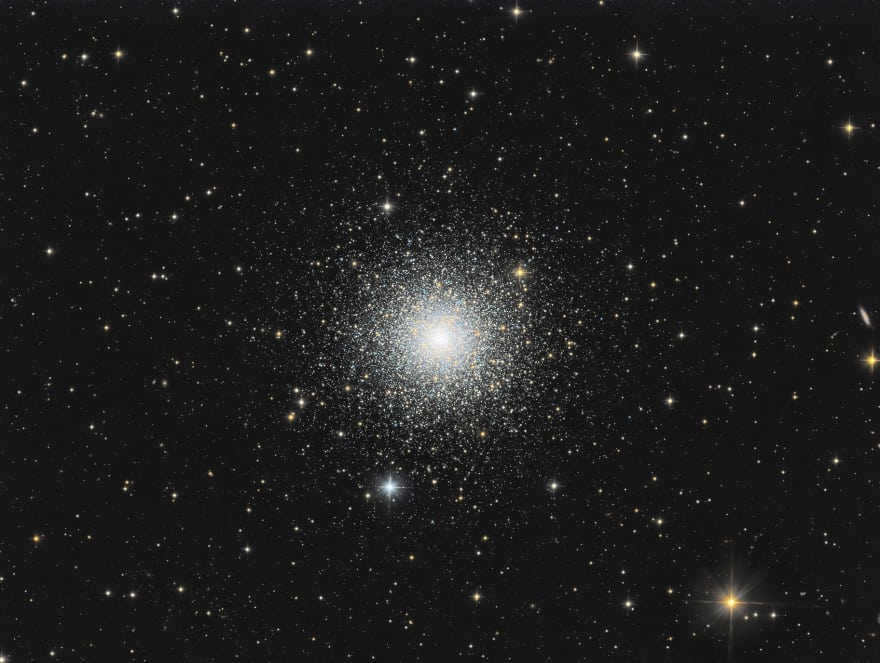
Messier 3 is an example of a globular cluster that can be easily observed even with binoculars. These clusters appear as dense spherical objects with varying degrees of brightness. If you have binoculars with a wide field of view and a stereo effect, the experience of observing them will be truly amazing. A pair of 10×50 binoculars is recommended for this purpose, as they offer a good balance between ease of use and aperture size. However, if you have access to larger astronomical binoculars, such as 20×100 or 20×80, you will be able to observe even more globular clusters, some of which can even be resolved into individual stars.
The drawback of binoculars lies in their limited magnification, making them less than ideal for observing globular clusters. For optimal observation of these clusters, a telescope is the recommended instrument. A telescope with a lens measuring 100 to 130 mm allows for the viewing of a vast number of globular clusters on a dark night, some of which break down into individual stars. Following this range, telescopes with a lens size of 200 to 250 mm offer a desirable balance between compactness and wide optical capabilities. In the CIS countries, approximately 70-80 objects of this nature can be observed with these telescopes. Additionally, these telescopes provide detailed and vivid imagery. Moving up to telescopes with a lens size of 350 to 450 mm, one can observe faint clusters from the Terzan and Palomar catalogs. Brighter clusters astound researchers with their billions of stars and vibrant hues.
Don’t rush to purchase specialized UHC and OIII filters. Not only do they fail to aid in the examination of globular clusters, but they also have a detrimental effect on them. Occasionally (such as when observing in an area with minimal lighting), broad-spectrum SkyGlow and LPR filters can provide a slight enhancement in the visibility of individual stars within clusters. More commonly, these filters work by partially blocking stray light emitted by mercury and sodium lamps, thereby slightly increasing the contrast between the sky background and the object being observed.
Exploring globular clusters
After examining specialized catalogs, you will discover that there are 99 globular clusters with a brightness exceeding 13 star magnitude that can be observed from the former USSR territory. Out of these, approximately 88 clusters are visible from Moscow and the surrounding region. However, most of these clusters are positioned quite low above the horizon. Only 25 clusters rise above a 30˚ level at the latitude of the Moscow region, and 34˚ in the southern part of Russia. The conditions for observing the remaining clusters are not very favorable, which is why higher requirements are placed on optical equipment, the astronomer’s expertise, and atmospheric conditions.
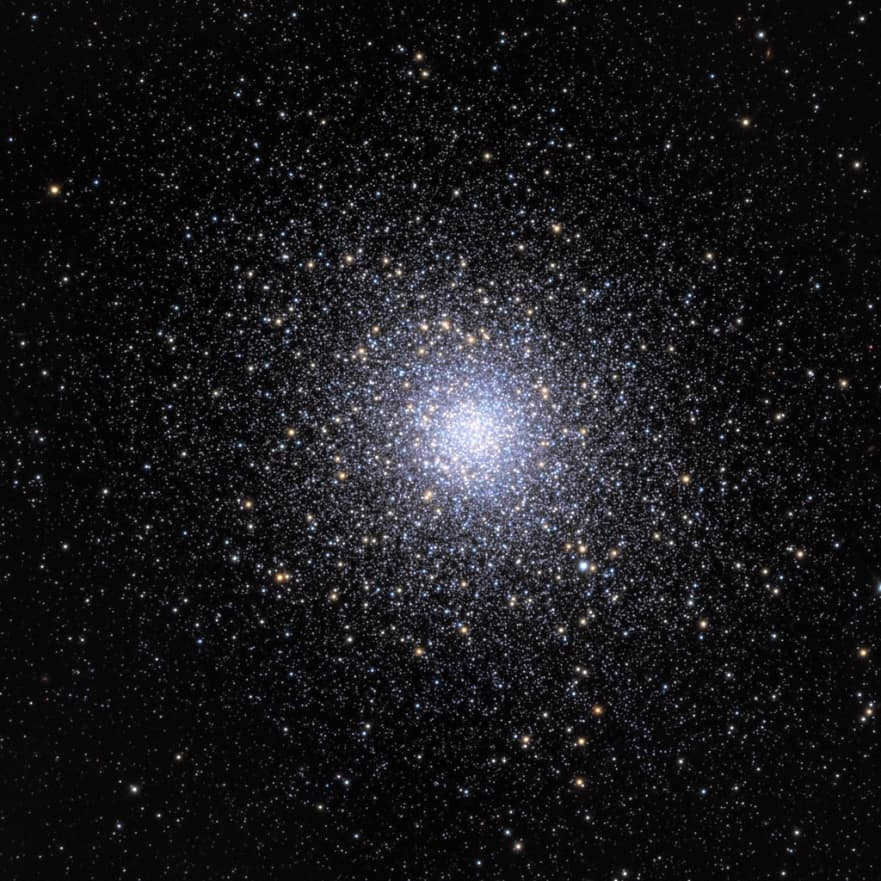

The Orion Astroview 120ST telescope captured an impressive image of Messier globular cluster 5.
Exploring the night sky, astronomers in the Northern Hemisphere have the opportunity to observe various clusters. Two notable examples are Messier 5 located in the Serpens constellation and Messier 13 in Hercules.
Throughout the year, it is possible to observe globular clusters. However, the ideal conditions occur during the summer months when constellations such as Scorpio, Snake, Sagittarius, Hercules, and Serpentor, which are home to bright clusters, pass over the horizon.
During the spring season, there are also intriguing clusters in constellations such as Veronica’s Hair, Hound Dogs, and Volopassus.
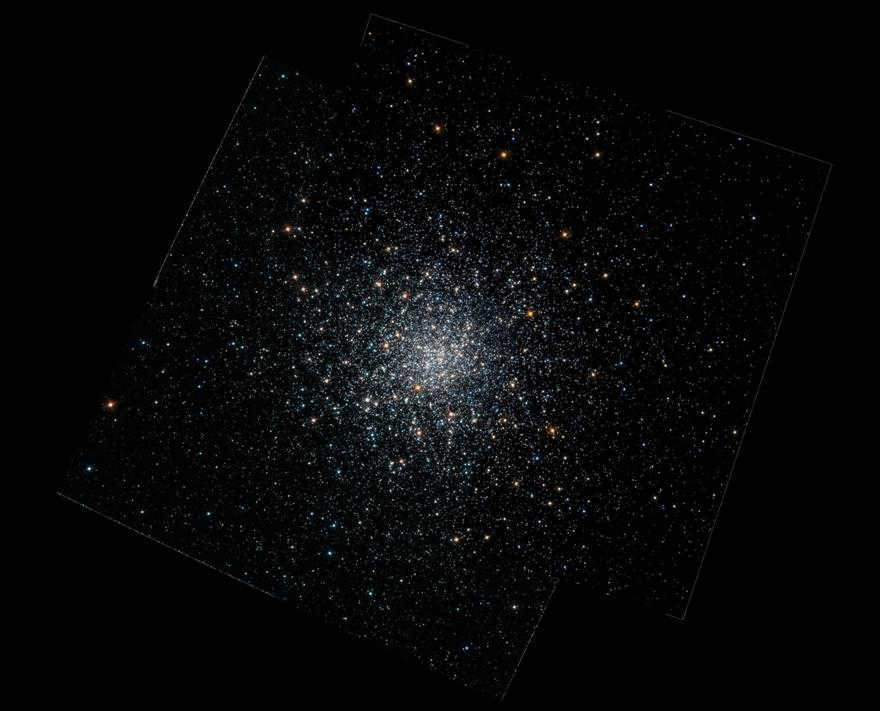
The globular cluster 79 is known as Messier globular cluster.
Throughout the autumn months, astronomers have the opportunity to observe globular clusters located in the constellations Aquarius and Pegasus. In the winter season, the study of such objects is also possible, although the chances of success are reduced due to the scarcity of globular clusters in winter constellations. However, there is one exception – the presence of Messier 79 in the constellation Hare.
Choosing the Object of Observation: Catalogs of Globular Clusters
Typically, amateur astronomers familiarize themselves with objects in other galaxies using the renowned Messier catalog. This catalog compiles the most fascinating galaxies, nebulae, and star clusters that can be observed with amateur-level telescopes. Within this immensely popular catalog, there is information on 29 globular clusters, each of which is a true gem of the night sky. Below is the Messier catalog featuring a list of globular clusters, where you will find a description and photo for each one.
Globular Star Clusters in the Messier Catalog
Star clusters are a collection of stars that share a common origin and are gravitationally bound together for a specific period of time. They are an invaluable resource for astronomers, providing insight into the process of stellar evolution. There are two primary categories of star clusters: dispersed clusters, also known as open clusters, and globular clusters. To delve deeper into the fascinating world of galaxy star clusters, check out this captivating video.
Types of stellar clusters
Dispersed stellar clusters
Dispersed stellar clusters are named as such because it is possible to distinguish individual stars within them. For instance, the Pleiades and the Hyades are in such proximity that individual stars can be observed without the aid of a telescope. These clusters are sometimes referred to as galactic clusters due to their location within dusty spiral arms. The stars in an open cluster originate from the same source, typically forming from an initial molecular cloud. Typically, a cluster consists of a few hundred stars, but can reach several thousand.
The gravitational force is responsible for keeping the stars together, although it is relatively weak. The cluster orbits around the galaxy and eventually disintegrates when it comes into contact with stronger gravitational forces from other objects. It is believed that the Sun originated from an open cluster that no longer exists. Hence, open clusters are always comprised of young celestial bodies. In the case of the Pleiades, there is still a visible nebula, suggesting that it is a relatively recent formation.
Open clusters consist of population I stars, which are young and have a high metal content. These clusters typically range in width from 2 to 20 parsecs.
Star clusters in the Messier catalog
Other scattered star clusters of note
Clusters of stars in a globular arrangement
Globular clusters of stars are made up of a few thousand to a million stars that are organized in a spherical gravitational system. These clusters are located in the halo and consist of the oldest stars, known as population II stars, which have evolved but have low levels of metallicity. The age of these clusters is so advanced that any star above the G or F class has already moved beyond the main sequence. Unlike other star clusters, globular clusters contain very little dust and gas, which means that no new stars are formed within them. The density of stars in the inner regions of a globular cluster is much higher compared to areas closer to the Sun.
Globular clusters, in addition to having a shared origin, also possess a unique characteristic of being held together by gravity, preventing the dispersion of stars. The Milky Way is home to around 200 globular clusters, notable examples including 47 Tucana, M4, and Omega Centauri. It is worth noting that there is some speculation surrounding Omega Centauri, as it is believed by some to potentially be a dwarf spheroidal galaxy.
Messier catalog of globular star clusters
Other globular star clusters that are known
Aging of star clusters
Astronomers find star clusters extremely valuable as they can help determine the age of a star and trace its development.
Open clusters consist of stars that have a common origin, resulting in similar levels of metallicity. This similarity allows all members to follow the same evolutionary path. Additionally, open clusters are located at the same distance, enabling the deduction of absolute magnitude. However, if you observe bright stars that stand out, it indicates that they are significantly brighter than their dimmer counterparts.
Scientists use this data to generate numerical charts for clusters. These charts show the apparent magnitude of V on the vertical axis in relation to the numerical index B – V on the horizontal axis. By utilizing spectrographic parallax, the chart can be adjusted to determine the absolute magnitude.
If we plot these charts, we obtain the lower graph. As these clusters exist at varying distances, the graph is calibrated to reflect absolute magnitude values.
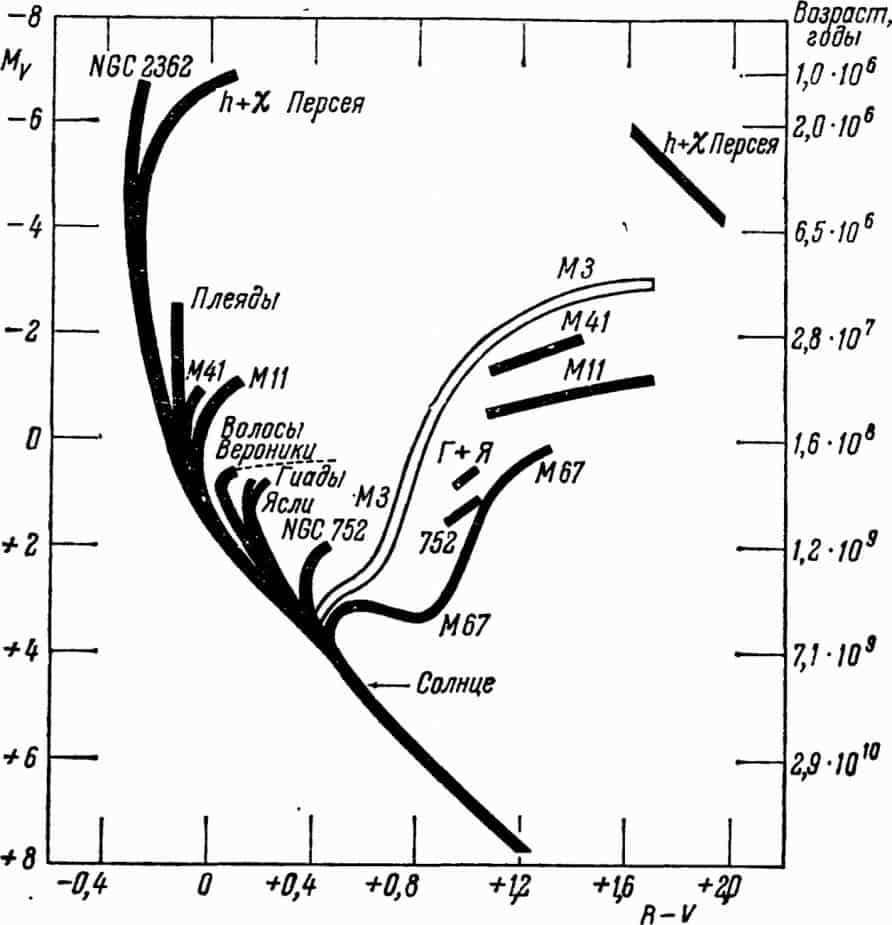
A fresh measurement is evident on the vertical axis on the right. The age of the cluster is represented by the term “Years”. The Perseus pair is so youthful that the majority of stars remain in the main sequence phase. The Pleiades are slightly older and have no stars with a color index exceeding 0 (spectral class A0). More massive objects have already transitioned to the giant branches. M67 does not have a star with a color index hotter than 0.4. The pivotal point on the diagram where the cluster deviates from the main sequence is of utmost significance. The lower the main sequence, the older the cluster.
Globular clusters are typically much older than open clusters, hence the color value on the diagram indicates more evolved stars. They are also lacking high mass objects. This point is demonstrated below without the inclusion of M55 as an example.
There is a noticeable group of hot stars in the main sequence above the cutoff point. These stars are known as blue stragglers. Scientists theorize that due to the high stellar densities in globular clusters, some stars are able to merge together. This merging increases the star’s mass, resulting in a hotter and brighter appearance compared to the rest of the stars in the cluster. While star clusters are not permanent structures and eventually collapse, you can learn more about this process by watching the accompanying video. Additionally, you can use the online star map to search for clusters yourself. If you don’t have access to a telescope, you can visit our page featuring a virtual model of the Milky Way galaxy or browse through photos of different star clusters.
Star clusters are composed of numerous stars, ranging from a few dozen to several million, that are connected by the force of gravity. These clusters, which contain some of the stars within our own Galaxy, move together as a unified entity within the Galaxy, suggesting a shared origin for the constituent stars.
Categories of star clusters
Star clusters can be categorized into two types: scattered and globular. In the Milky Way Galaxy, there are around 200 globular clusters and several thousand scattered clusters.
Scientists estimate that our Galaxy, the Milky Way, contains approximately one hundred billion stars. Many of these stars are part of subsystems with different multiplicities, such as double and triple stars, as well as star clusters and clusters.
Scattered and globular are the two primary types of star clusters.
Scattered star clusters lack a distinct shape when observed, giving the impression of a disordered arrangement of stars and the instability of such a structure. The majority of scattered star clusters in the Milky Way are found near the Galaxy’s plane of symmetry, forming a flat subsystem. This makes it challenging to locate and identify scattered clusters, as the dark dust and gas concentrated along the plane of symmetry obstruct our view of many of these clusters. Distant scattered star clusters are difficult to distinguish because they do not contain a sufficient number of stars. It is estimated that there are approximately 30,000 scattered star clusters in the Galaxy. The composition of scattered clusters is unique; they rarely contain red and yellow giants and are completely devoid of red and yellow supergiants. However, white and blue supergiants, which are stars with high temperatures and extremely high luminosity, are commonly found in scattered clusters.
When stars have high temperatures and belong to the OiB spectral classes, it generally indicates that they are relatively young. Hence, we can infer that scattered star clusters are not comprised of older members of the Galaxy. These clusters have a limited number of variable stars, and the ones that do exist have long periods of changing brightness, ranging from a few days to even a few tens of days. Additionally, scattered clusters typically contain significant amounts of gas and dust. All of these factors contribute to the notion that scattered star clusters are somehow connected to the birth and early phases of stellar evolution.
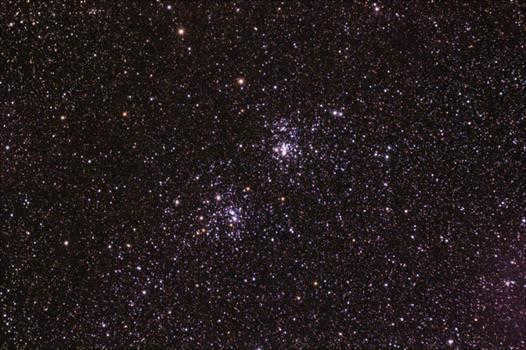
Figure. The pair of groupings known as the double cluster ch and χ in the constellation Perseus.
Globular star clusters are characterized by completely distinct characteristics and attributes. Their unique shape suggests that these clusters have achieved a state of equilibrium and stability. The composition of globular clusters differs significantly from scattered clusters, with an abundance of red and yellow giants and supergiants, but a complete absence of white and blue giants and supergiants. It is widely accepted that the stellar population in globular clusters is fundamentally different from that in scattered clusters. These differences are evident in various aspects, such as the presence of numerous variable stars, particularly short-period Cepheids with less than a day of light variation. Unlike scattered clusters, globular clusters contain negligible amounts of gaseous and dusty matter. The combination of these properties and characteristics supports the belief that globular star clusters are exceptionally old and represent the later stages of stellar evolution. In terms of their spatial distribution, it has been observed that the vast majority of globular star clusters are located far from the Galaxy’s symmetry plane, evenly distributed on both sides to form a spherical subsystem. These dense systems, comprised of a large number of stars, stand out prominently among other objects in the Galaxy and are visible even over great distances.
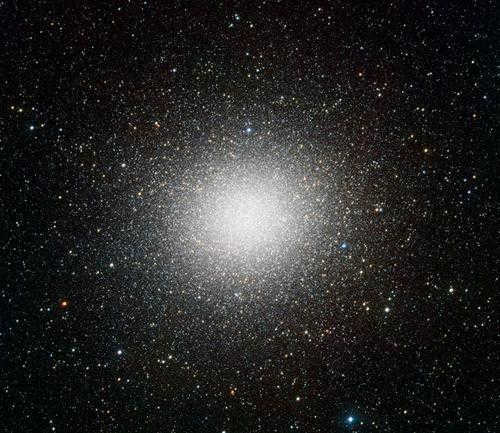
Figure. The spherical aggregation of stars known as ω Centauri
The differences in the curvature of the graph line reflect variations in the age of different clusters. It is evident that scattered star clusters are significantly younger compared to globular clusters. The most youthful scattered star cluster, NGC 2362, is approximately 1.0*10 6 years old, while the double cluster H and χ of Perseus is around 8*10 6 years old. The Pleiades, on the other hand, has an age of approximately 10 8 years. The oldest cluster depicted here, M57 (NGC 2682), has an age of about 8*10 9 years and its diagram already bears resemblance to that of a globular star cluster.
The arrangement of globular clusters on the sky is clearly biased towards one half. This unique pattern of globular clusters in the sky was initially identified by Shapley in 1918. Before that, the prevailing belief was that the Sun was situated at the center of the Galaxy. Shapley’s discovery of the displacement of all globular clusters in one half of the sky provided evidence that the Sun is not at the center of the Galaxy, but rather closer to its periphery. This further challenged anthropocentrism – the notion that humanity occupies the central position in the Universe.
Hence, all observed objects within the Galaxy can be categorized into three groups based on their predominant locations.
Figure 140. The Galaxy’s Subsystems. I – the spherical component; II – the intermediate subsystems; III – the flat component; IV and V – the outlines of the spiral components.
The flat subsystem consists of hot giants and supergiants, long-period Cepheids, dusty matter, gas clouds, and scattered star clusters, which also belong to this subsystem.
The spherical subsystem consists of yellow and red subdwarfs, yellow and red giants, short-period Cepheids, and globular clusters.
The intermediate subsystem consists of yellow and red dwarfs and special variable stars called mirids – named after the first star of this type to be studied, Mira (meaning marvelous, amazing) Keith, which exhibit strong and irregular changes in their brightness.
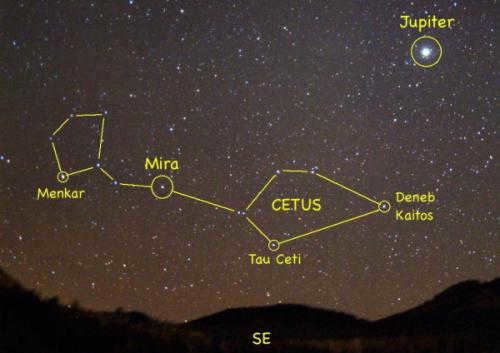
It has been discovered that objects in different subsystems not only differ in their location, but also in their velocities. The objects in spherical subsystems have the highest velocity perpendicular to the Galaxy’s plane, while the objects in flat subsystems have the lowest velocity component. Spectral studies have revealed that the chemical composition of objects in different subsystems also differs – stars in flat subsystems are found to be richer in metals compared to stars in spherical subsystems.
The discovery of these distinct subsystems in the Galaxy is highly significant as it suggests that stars of different types formed in different regions of the Galaxy, under varying conditions.
Topic: Dispersed and clustered star clusters.
Purpose: The aim of this course is to develop the necessary conceptual framework for comprehending information about galaxies, which are considered one of the primary types of cosmic systems. Additionally, this course will examine different types of galaxies and clusters.
Personal: This course will also explore the fundamental human need for knowledge and understanding, and the distinction between mythological and scientific consciousness. It will encourage students to engage in self-development and self-education, with a focus on motivation for learning and cognition. Furthermore, this course aims to foster a comprehensive understanding of the world and cultivate a conscious, respectful, and benevolent attitude towards others and their opinions. Meta-subjects covered in this course include physics (covering topics such as kinetic energy, spectral analysis, thermonuclear fusion, the speed of light, and elementary particles) and social science (exploring the materiality of the world and its knowability, the basic forms of matter, and the movement of matter).
Analyze and organize educational material, construct classification tables and diagrams for galaxies. Have the ability to describe and elucidate the various types of galaxies. Draw conclusions based on theoretical information. Apply the acquired knowledge in everyday tasks. Planned learning outcomes: – Understand the concept of a galaxy. – Have the ability to explain the different types of galaxies. – Explain the names, types, and locations of galaxies. – Utilize the acquired knowledge and skills in practical tasks and everyday life. Personal SDGs: internal position, motivation. Cognitive SDGs: develop an astronomical model that explains the structure of the Milky Way. Communicative SDGs: foster cooperation and utilize both verbal and non-verbal forms of communication. Regulative SDGs: set learning goals and objectives.
Skills and methods in astronomy are essential for general academic development. These skills include the ability to distinguish between facts, hypotheses, causes, effects, proofs, laws, and theories. Additionally, students will learn how to solve astronomical problems effectively. Communication skills are also emphasized, with a focus on monologic and dialogic speech. Students will develop the ability to understand different perspectives and respect others’ opinions. They will also learn how to gather information from various sources to enhance their understanding and communication skills. Reflective activities are incorporated into the curriculum to teach students how to evaluate their own work and engage in self-control. This includes setting goals, planning, and finding the most effective means to achieve those goals. The lesson format will involve learning new material and applying that knowledge in practical scenarios. Students will have opportunities for both individual and group work.
Star clusters in the Milky Way
The Milky Way is home to various star clusters, which are like bustling metropolises in the vastness of space. These clusters, known as galactic star clusters, are interspersed among individual stars throughout our Galaxy. Unlike tightly packed clusters, known as globular clusters, galactic star clusters have a more scattered distribution of stars. They can range in size from hundreds to several thousand stars, and their arrangement in space lacks a distinct pattern, resembling the nomadic tents of a gypsy camp. The Pleiades, a famous cluster, serves as a prime example of a scattered star cluster within the Milky Way.
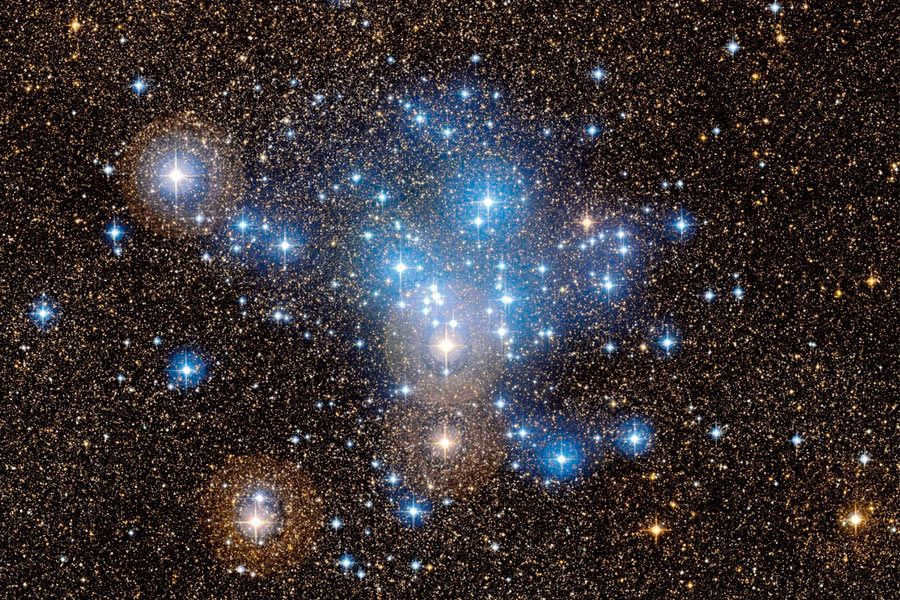
M25 is a cluster of multiple stars.
During the autumn season, M25 can be seen rising in the evening, and during winter evenings, it can be seen high in the sky. The naked eye can spot around six stars in this cluster, while those with keen eyesight can see from seven to eleven stars. When observed through a telescope, hundreds of stars of varying brightness can be seen in this cluster. The movement of stars in space is used to determine their belonging to this specific cluster. This helps in distinguishing stars that are closer or farther away, and those that are randomly projected onto the “star pile”.
The Pleiades, on the other hand, are located 320 light-years away from us, and the diameter of this star group is approximately 5 light-years.
The Pleiades are the biggest yet sole galactic star cluster. Near the crimson Aldebaran, the primary star in the Taurus constellation, a small and less concentrated group of stars can be observed in the Hyades cluster, which is more spread out than the Pleiades.
We are aware of approximately 300 smaller galactic clusters in total, but there are numerous others that are farther away, dimly illuminated, or concealed from us by obscure nebulae.
Globular star clusters
Globular star clusters, estimated to be around one hundred in number, have their quintessential example in the Hercules star cluster. When observed through binoculars, this cluster appears as a hazy star with a magnitude of approximately six. However, a powerful telescope or a photograph reveals that this seemingly solitary star is actually a tightly-packed spherical cluster composed of hundreds of thousands of stars.
Although we can only see the largest stars, which are comparable in size to our Sun, within this “nebulous little star,” there are actually countless smaller stars that make up the cluster. Due to their distance from Earth and their dense concentration, especially towards the center, these stars blend together and create a continuous glow of light when observed from our vantage point on the ground.

NGC 3572 is an example of a globular star cluster that is situated relatively close to us. It is located in the Hercules constellation and is approximately 30,000 light-years away from Earth. This cluster has a diameter of about one hundred light-years.
On the other hand, there are globular clusters that are much more distant from us. Some of them can be found as far as 230,000 light-years away. By studying the distances of these globular clusters, scientists have determined that they extend to the boundaries of our star system.
It is important to keep in mind that when we imagine star clusters, the dense grouping of stars that we see is only an illusion. This apparent concentration is caused by the immense distances that separate us from these celestial objects. The vastness of space becomes evident when we consider the vast gaps between us and the nearest star clusters and galaxies.
Star clusters are commonly categorized into two main groups: globular and scattered. However, there are instances where this classification is challenged, as not all cosmic formations neatly fit into either category.
Globular clusters
Globular clusters, which can number over ten thousand in some galaxies, are remarkably ancient, with ages surpassing 10 billion years. These clusters likely formed around the same time as the Universe itself, providing valuable insights to scientists who have deciphered the information they emit.
Typically shaped like a sphere or ellipsoid, globular clusters consist of tens of thousands of stars of various sizes. These stars range from ancient red dwarfs to young blue giants, generated through stellar collisions within the cluster.
Scattered clusters are typically younger than globular clusters, with an estimated age of hundreds of millions of years. These stellar conglomerates can only be found in spiral or irregularly shaped galaxies, which continue to undergo star formation processes unlike elliptical galaxies.
Compared to globular clusters, scattered clusters have a lower density of stars. However, each individual star can be observed separately due to their significant separation from one another and lack of merging in the overall sky.
Stellar groups
These clusters are regarded as the most recent in the cosmos and are merely tens of millions of years in age. The gravitational connections within them are relatively feeble and inadequate to sustain the system’s stability for an extended period, thus they are bound to disassemble within a relatively brief timeframe.
Exciting new findings
Until recently, scientists believed that globular clusters were the oldest formations of stars. These clusters were thought to have lost their rotational motion over time and were considered to be simple systems. However, in 2014, a team of researchers from the Max Planck Institute for Extraterrestrial Physics, led by Maximilian Fabricius, made a groundbreaking discovery. Through extensive observations of 11 globular clusters in the Milky Way, they found that the central part of these clusters is still rotating.
This finding has left scientists puzzled as current theories are unable to explain this phenomenon. If this information is confirmed, it could lead to significant changes in our understanding of globular clusters and may require revisions to existing mathematical models that describe their motion.

As we explore various objects for observation in our ongoing series on constellations, we frequently come across celestial objects known as star clusters. These clusters can be classified into two main types: open (or scattered) clusters and globular clusters. In this article, let’s delve deeper into their characteristics and learn more about these fascinating cosmic phenomena.
Dispersed groupings
This sort of grouping consists of 20 to several thousand stars. They can be easily observed and located in the night sky without any optical aid, and even with a basic amateur telescope, individual sections can be seen. The stars are held together by the force of gravity and are mainly young and hot.
These groupings are found near the Milky Way’s band. Around 1000 dispersed groupings have been identified, but astronomers speculate that the number could exceed several tens of thousands. They appear as a cluster of stars close to one another. The brightest cluster visible from Earth is the Pleiades (or M 45), with a stellar magnitude of 1.6 m.

Above is a photograph that captures the presence of interstellar dust. This particular image showcases a reflection nebula that reflects the vibrant blue light emitted by young and extremely hot stars.
Another notable illustration of dispersed clusters can be found in the Wild Duck cluster (also known as M 11) within the Shields constellation.

Stellar associations, which are the youngest dispersed star clusters surrounded by gas-dust nebulae, can be referred to as stellar associations. It can be quite challenging to differentiate these associations from other stars, however, by utilizing spectral methods, they can be categorized into distinct groups: O-association, which includes hot stars of spectral classes O and B, and T-association, which comprises of young forming stars of classes F, G, K, M.
Globular clusters consist of 10,000 to a million stars. The shape and some outlines of the entire cluster can be seen with binoculars or an amateur telescope. To study them in more detail, a powerful instrument is required.
These clusters are found in close proximity to our Milky Way galaxy. They orbit around the center of the galaxy in elongated elliptical paths.
All globular clusters have a spherical appearance, with a very bright center that gradually fades towards the edges as the star concentration decreases. Due to their significant brightness and luminosity, almost all clusters of this kind are observable. There are slightly over 100 of them in total.

M 12 is a globular star cluster that can be found in the Serpentine constellation. It is often sought after during the early summer months. Another notable globular cluster, M 14, can also be found in this constellation:

The stunning M 14 globular cluster
Overall, this is the essential information required to identify various types of star clusters in the night sky and comprehend their specific locations.
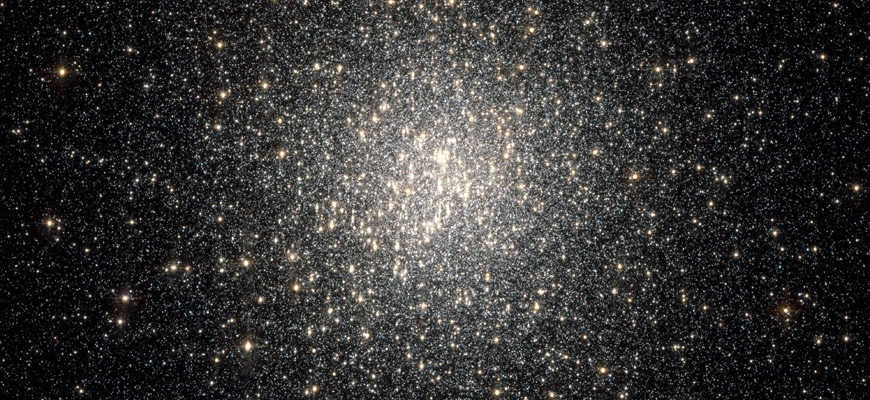
Star clusters are unique formations distinguished by their distinct formation and interconnectedness caused by the force of gravity. They serve as a valuable resource for astronomers, enabling them to easily explore and simulate the progression of stars.
Gravitational forces exert an influence on particles of dust and gas, causing them to undergo a contraction in size. As the density increases, the temperature within also rises. During the process of condensation, the substance gains mass. If there is a sufficient amount of matter to initiate a nuclear reaction, a new celestial body will be born. It is not uncommon for multiple stars to form from a single cloud. In the event that the number of stars exceeds 10, clusters will emerge.
History of astronomical discoveries
Throughout history, humans have had a fascination with the night sky. However, for a significant period of time, it was widely believed that celestial bodies were evenly distributed across the universe. It wasn’t until the 18th century that W. Herschel made a groundbreaking observation, noting that certain areas of the sky contained a higher concentration of celestial bodies than others. He also provided an explanation for the appearance of stellar nebulae, describing them as clusters of celestial bodies that appeared as spots when viewed without the aid of telescopes. As scientific knowledge advanced in the 19th century, it was discovered that these celestial bodies came in various shapes and sizes, further expanding our understanding of the universe.
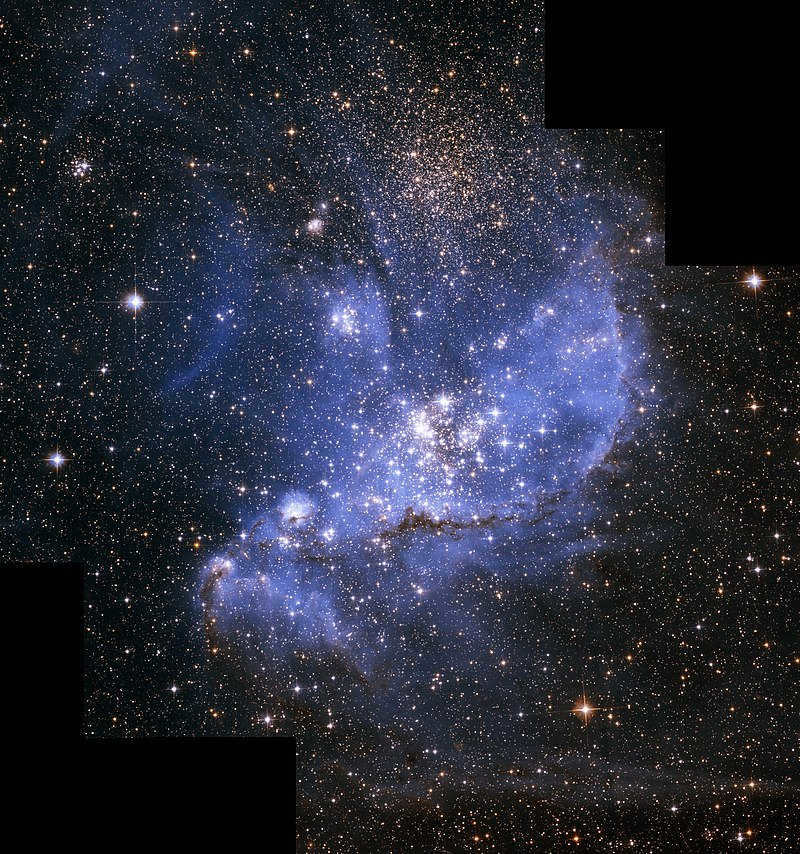
NGC 346, a dispersed cluster located in the Small Magellanic Cloud.
Grouping
There are two types of star clusters: scattered and globular. Scattered clusters are named as such due to the individual stars being easily distinguishable. An example of this is the Hyades and Pleiades, which are very close together, allowing the naked eye to see the individual stars. These clusters are referred to as galaxy clusters due to their position in the dusty spiral arm area. All these stars were formed from the same molecular cloud. Typically, a single cluster can contain several hundred stars.
It has been proposed that the Sun may have originated within an open cluster, which is no longer present. This cluster would have been populated by first-generation stars, which are known for their relatively young age and high metallicity. These stars typically have a size ranging from 2-20 parsecs. A large collection of stars like this is referred to as a galaxy group.
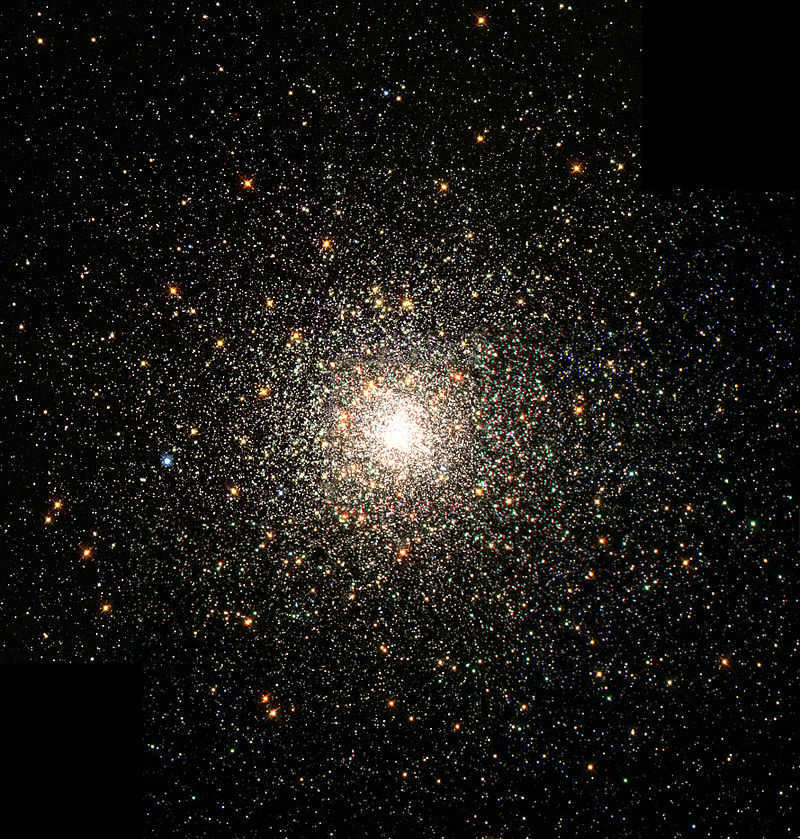

The globular cluster Messier 80 in the constellation Scorpius is positioned 28,000 light-years distant from the Sun and holds hundreds of thousands of stars.
These stellar assemblages are considered to be quite ancient, as each of the stars has already surpassed the main sequence stage. They lack dust and gas due to the absence of new object formation. In contrast to the areas near the Sun, their density is significantly higher.
Distinctive Age Characteristics of Star Clusters
Star clusters hold immense significance for astronomers as they provide a valuable means of determining the age of celestial bodies and tracing their evolutionary processes. The stars associated with open clusters share a common origin, resulting in similar levels of metallicity. Consequently, all cluster members exhibit identical evolutionary stages.
Armed with this information, scientists typically proceed to construct charts and digital graphs representing various types of clusters. These visual representations plot visual magnitude on the vertical axis against the numerical index B-V on the horizontal axis. By utilizing parallax (spectrographic) measurements, scientists can determine the absolute value.
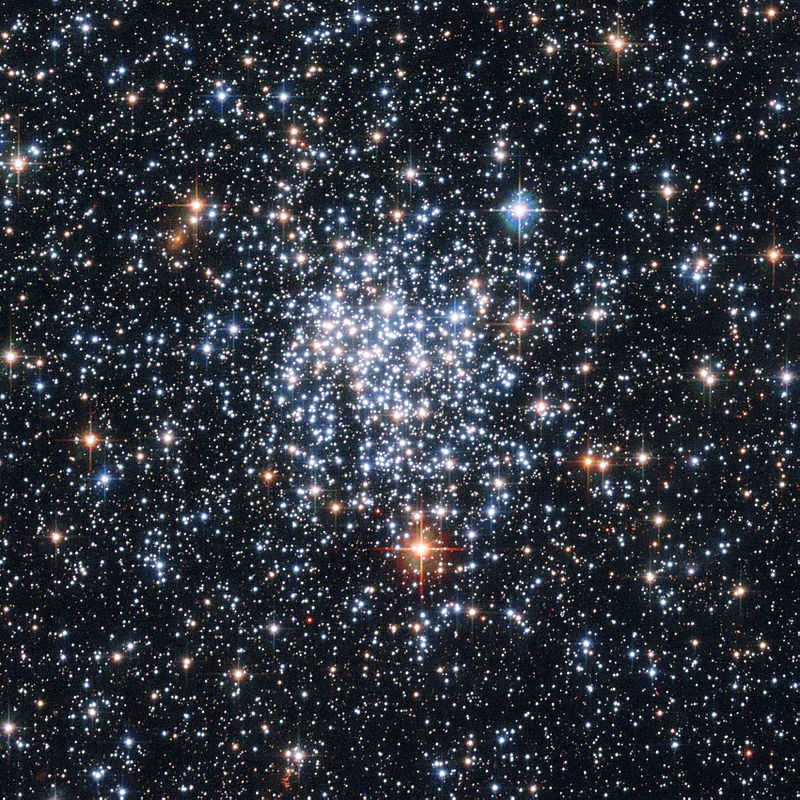
NGC 265 is a star cluster located in the Small Magellanic Cloud. It is characterized by its diffuse nature.
Description of the Chart
If charts are organized for celestial objects like star clusters, it is possible to create a simple graph. This graph will display the varying distances between the stars and the calibration of the diagram to absolute magnitude values.
In the case of more massive objects, they have already moved to higher branches. The highest value is observed at the turning point, where the main sequence of the cluster ends. The lower the value, the older the object is.
Globular clusters typically exhibit significant ages compared to open clusters. In terms of their color-magnitude diagram, they display highly evolved stars. Additionally, they are devoid of massive objects.
Hence, a massive assemblage of stars is known as a galaxy cluster and warrants thorough investigation, despite the wealth of existing information. We have examined the nomenclature and various types of star clusters.





